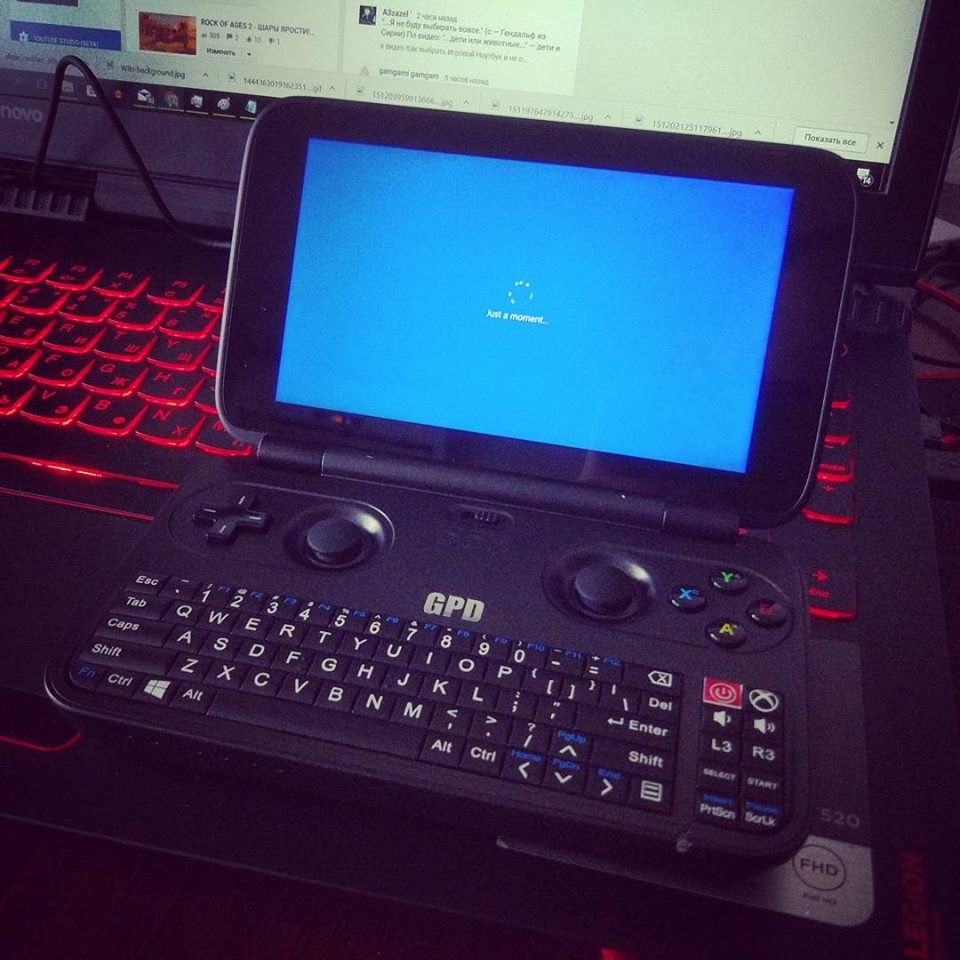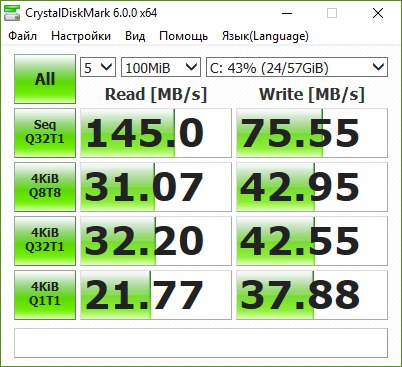The smallest gaming laptop GPD WIN - What is it capable of and who needs it?

About a year, I did not dare to buy a tiny Windows laptop and do not regret that I waited: over time, it was finalized, a revision was released with a new Z8750 processor, a metal lid and improved buttons, and at the same time the software was finalized and access to some BIOS settings was blocked so that people stopped console accelerate (and kill). Yes, and the price dropped to $ 300 apiece, so a month ago I took it to Ali. It's time to tell how it happened and whether you should repeat such an ambiguous experience!
About 5 years ago I disliked Windows and believed that smartphones would reach great heights in all spheres of our life (partly so), and the games will become at least a little portable (here the genie strongly distorted the wish), but even giants like Sony failed in this field and NVIDIA - their gaming mobile devices are no match for the stationary, both in performance and in popularity. Ordinary mobiles do not even have a hint of convenient control in games or the ability to run professional software - even the appearance of the API Vulkan did not change the balance of the market that rolled into the usual Free2Play. Only Nintendo took the lead due to the balance of price and Switch functionality, but I want the device not only to be a game player (at least to me), but also to buy Skyrim and other games a second time for 1/5 of the price of the gadget.
And now, when I was almost desperate, a strange mini-computer GPD WIN came out from the Chinese Gamepad Digital team, previously known for gamepads (suddenly!) And the Android console of average scall. A couple of years ago there were a lot of analogs, all in the form of prototypes or even “on paper” (and still there), but only within a few months GPD got out of the idea into production and went on sale. I think the past production experience helped and the fact that the team itself is from China, which means they have no barrier in dealing with manufacturers of motherboards and components. At the same time I looked closely at Smash Z, but it is huge, heavy, ugly and only game - in the presence of a gaming laptop the difference is not too great. As usual, I first waited for news from the front and studied the experience of other users, and only then took the unit myself.
For those who do not like video, I will sign it separately: far from all games go, but even many new items are launched and work in low resolution. It was inconvenient to run and aim in active shooters (mostly FPS) on the gamepad, although the gamepad itself was solid and a couple of battles in Overwatch for Hanzo were successful (for racing or fights it’s just chic). The keyboard is tough, but it is relatively convenient to type English letters, but the Russian layout is complete, but you will need to work with it from memory (to engrave or stick stickers on tiny curved buttons is almost impossible).
But the main problem is not at all in the processor, control or graphics chip - just very little internal memory for the gaming device on Windows 10. And you will have to buy a 128 GB SD card to actually use it for games. The screenshots below show speed tests for the built-in memory, a rather expensive Samsung 32GB SD card and the same size flash drive from some Wargaming event (Kingston). Keep in mind that performance drops when memory is full, so ideally the built-in drive is even faster.



Obviously, the built-in memory is good, even if it does not beat records and is inferior to my SSD in a laptop, but if it were 128 GB, it would be much easier to live - really big games would fit or the season of a series on the road. In the meantime, a portable device mainly moves around the house and helps to work or relax from the sofa.
If you wish, you can display an image via HDMI on a large screen and even work with Photoshop or Blender, and even more so with Visual Studio (only libraries will require disk space, and there is no more of it). A game on the sofa can be streaming from a full-fledged computer or laptop, while maintaining high-quality graphics and high FPS. I don’t regret a single cent, for I understood all the limitations beforehand, and I was rather pleasantly surprised by the application performance and quality of execution.
Specifications:
Screen resolution: HD 1280 x 720 (H-IPS, touch, multitouch)
Processor: Intel Atom X7 Z8750, 64 bits Quad Core, 1.6GHz ~ 2.56GHz
Number of cores: 4
Tech. Process: 14nm
Graphics type: integrated graphics system
Graphics chipset: Intel HD Graphics 405 Graphic processor
frequency: 200MHz ~ 600MHz
Number of GPU units: 16
Graphic processor memory: allocated from RAM
RAM: LPDDR3-1600, 4GB
Built-in memory: eMMC 4.51, 64GB (there is a microSD slot up to 128 GB, neof up to 256 GB)
Wi-Fi: 802.11 a / ac / b / g / n WLAN
Bluetooth: V4.1
HDMI - present (HDMI C Type)
Connectors: 1 x USB Type-C 3.0, 1 x USB 3.0 , 1 x TF Card slot, 1 x HDMI C type, 1 x 3.5mm
Built-in gamepad: two analog joysticks + A / B / X / Y + buttons with two shifters on the upper edges on each side + additional L3 / R3 buttons on the keyboard + Start / Select
buttons Other buttons: volume level ±; power button; gamepad mode switch (Dinput / Mouse / Xinput)
Keyboard: 67 standard PC keys + 10 additional battery types
: non-removable Li-ion
Battery capacity: 6700mAh
Operating time: about 6 ~ 8 hours
Sound system: Realtek ALC5645
Speaker / microphone: mono Speaker and built-in microphone
Case material: ABS + PC
Sensors: G-sensor and Hall sensor
Dimensions: 155 * 96 * 20mm
Weight: 300g
Set: 1 x GPD WIN; 1 x 5V 2A charger (usually with an adapter for euro outlets); 1 x instruction; 1 x warranty card; almost always 1 x film per screen; 1 x key to Windows 10 (unfortunately, the key is not up to date); in some cases, there is also a 1 x
PS recovery flash drive . In the comments, you can offer any additional tests or ask questions!
Only registered users can participate in the survey. Sign in , please.
